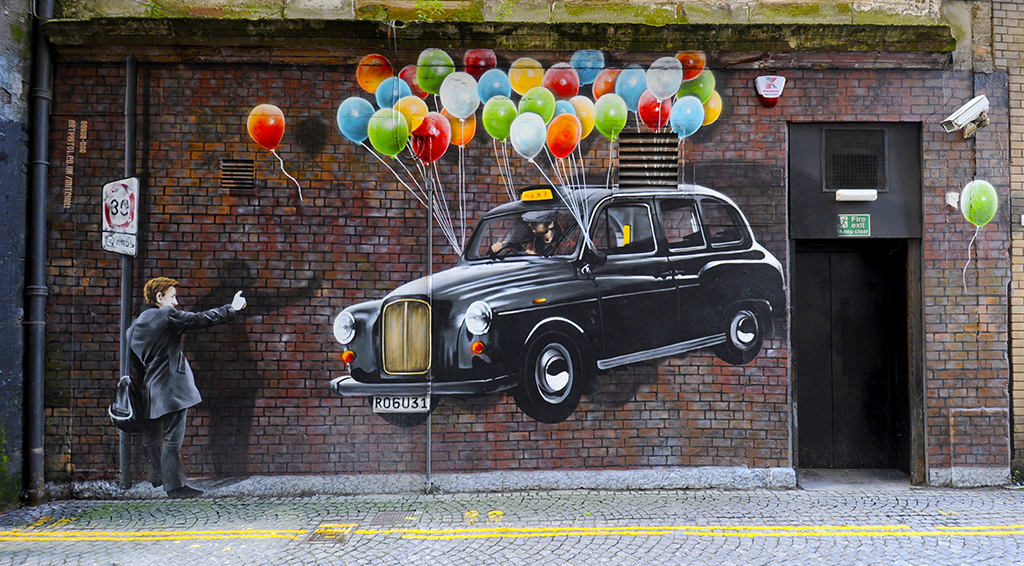
The free art gallery on the streets of Glasgow
Travelling into Manchester city centre in the run-up to the 2002 Commonwealth Games made for an interesting journey.
While state-of-the-art facilities popped up, such as the £32m aquatics centre and the City of Manchester Stadium, old buildings were shrouded from view. Some of the city centre’s derelict structures which escaped demolition prior to the Games, were covered in plastic sheeting to hide the less salubrious of Manchester’s offerings from the millions-strong global audience looking on.
Twelve years later, with the world’s media set to converge on the city for the 2014 Games, Glasgow took a different approach.

Art on Mitchell Street (Photo: Angus Blackburn)
While some of the architectural eyesores were earmarked for demolition, other parts of the city arguably lacking in luxury were actually highlighted. Glasgow transformed areas with a few cans of spray paint and a whole lot of talent.
From the swimmers emblazoned on a concrete wall at the Kingston Bridge, to Scottish badminton ace Kieran Merrilees along Wilson Street, marvellous murals started cropping up around the city. And it didn’t end with the Games. When the sports stars and visitors shipped out, the move to brighten up urban areas continued.
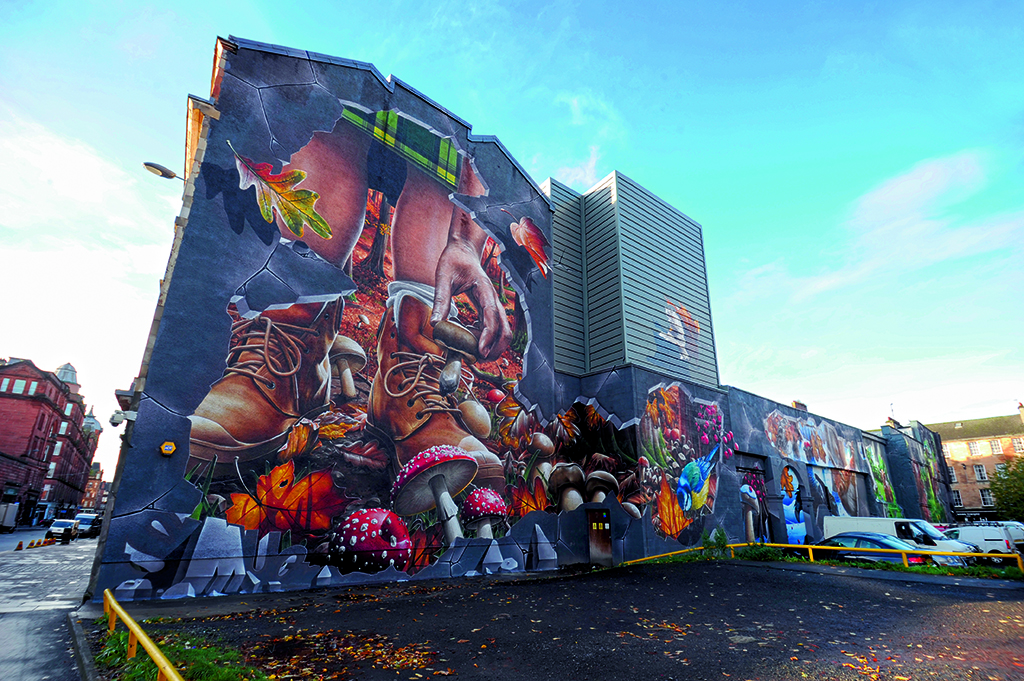
A gable end at Ingram Street (Photo: Angus Blackburn)
Created by the street artist known as Smug, an addition on a gable end in the High Street, depicts a modern-day St Mungo – the patron saint of Glasgow – and the story of The Bird That Never Flew.
The story goes that when he was a child, Mungo witnessed some boys throwing stones at robins. One fell to the ground and the boys ran away. Mungo ran to the fallen bird. Picking it up he prayed over it, and it revived and flew away. Onlooking villagers thought it was a miracle.
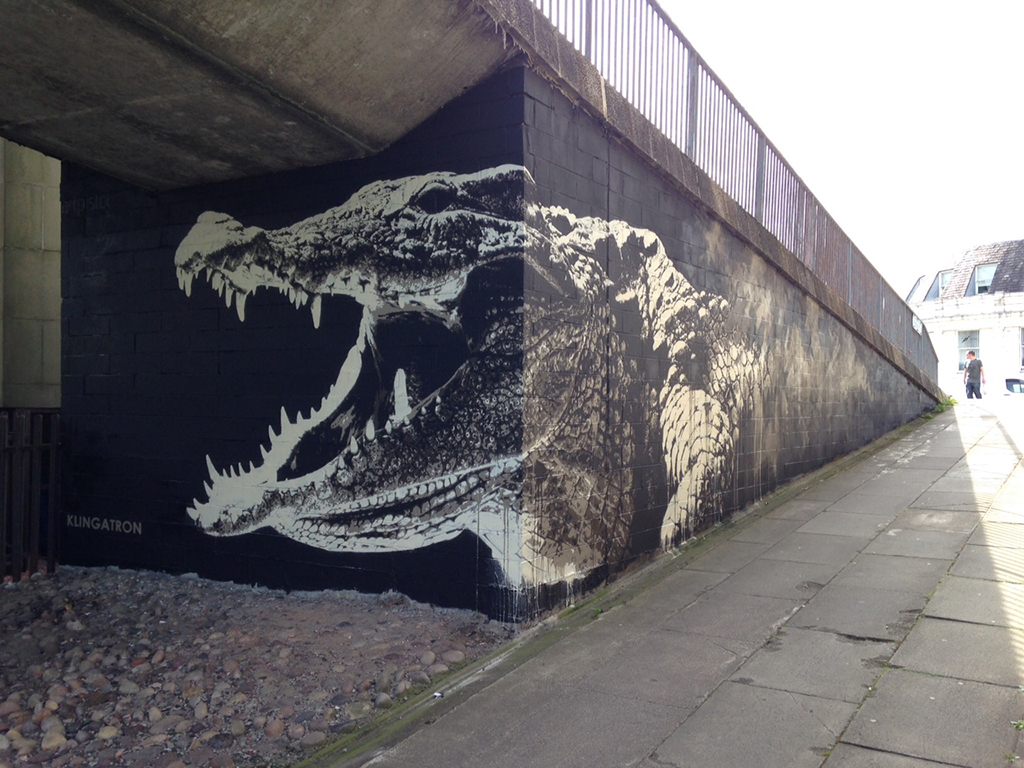
Art near Glasgow’s Charing Cross (Photo: Angus Blackburn)
Fittingly, Glasgow Cathedral, near to Smug’s painting, is the final resting place of the city’s patron saint.
Details of other pieces feature in dedicated Mural Trail literature, which showcases the diverse range of art within walking distance of the city centre. From the flying taxi on Mitchell Street to a giant panda on Gordon Lane, or the Scottish wildlife overlooking the Ingram Street car park, the murals rejuvenate streets and buildings.
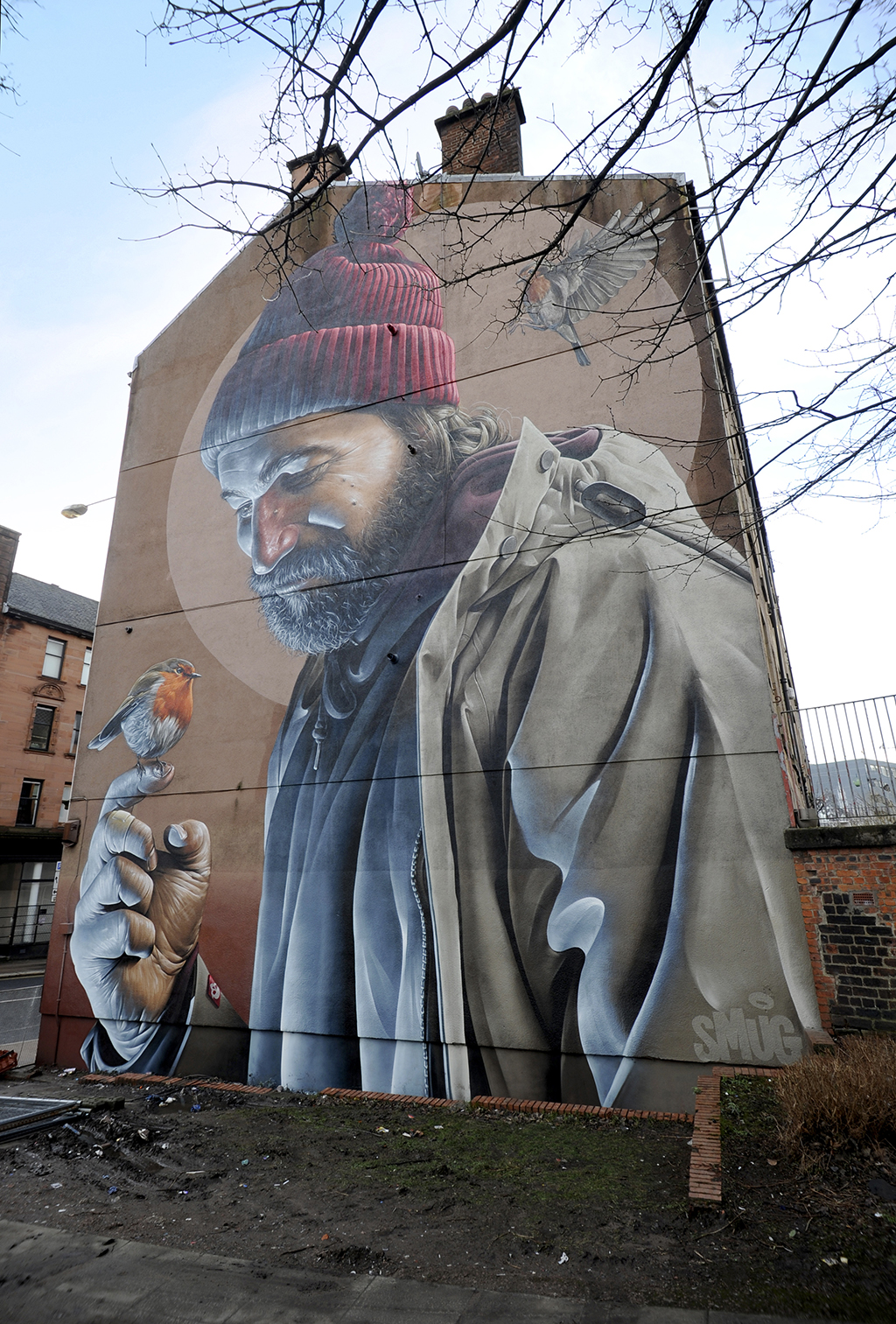
Work on the end of a building in Glasgow’s High Street (Photo: Angus Blackburn)
By creating splashes of colour, which brightens up lanes and streets, the murals have a positive impact, helping make these areas more inviting to both locals and visitors.
Bobby McNamara – aka street artist Rogue-One – is behind a number of artworks in the city, including the shadow puppets at Cowcaddens underpass and, in collaboration with Art Pistol, Howard Street’s giant escaped birds. He believes the work is also prompting people to challenge their own preconceptions, with sections of the public who dismissed all graffiti as vandalism, beginning to hear the word afresh.
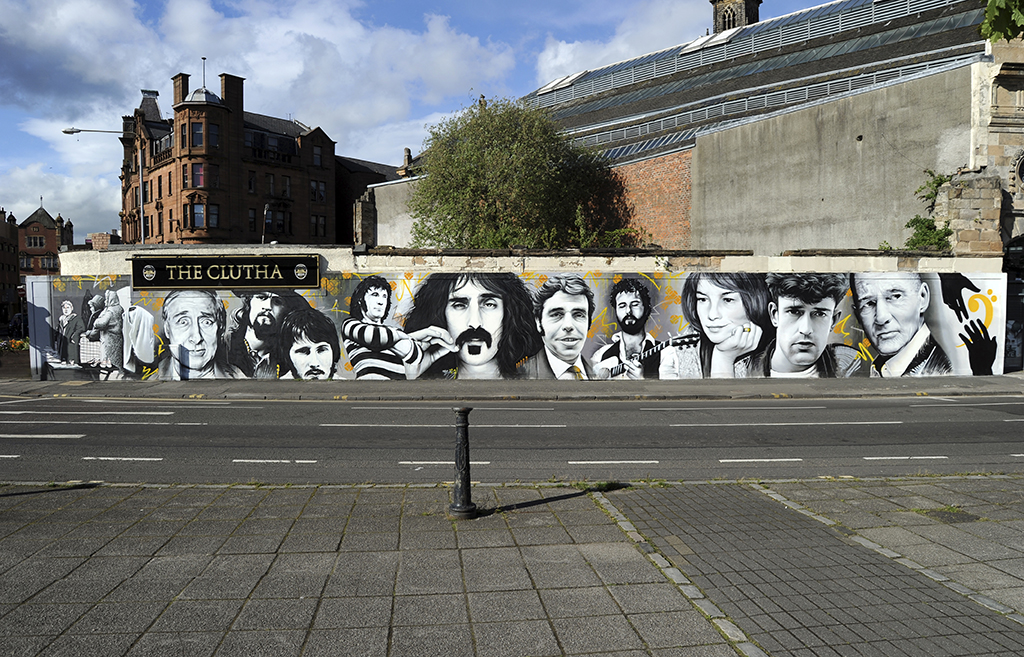
Art outside the Clutha Bar in Glasgow (Photo: Angus Blackburn)
‘They’re looking at these murals and thinking, “Wow, is this graffiti too?”,’ McNamara says. ‘On my Facebook page, I have older ladies message me and say, “We didn’t realise people could do this kind of artwork with spray paint, it’s amazing”.’
Artists can get involved by applying to the city centre Mural Fund, details of which can be found at www.glasgow.gov.uk/citycentremuralfund.
This feature originally appeared in 2016.
TAGS

